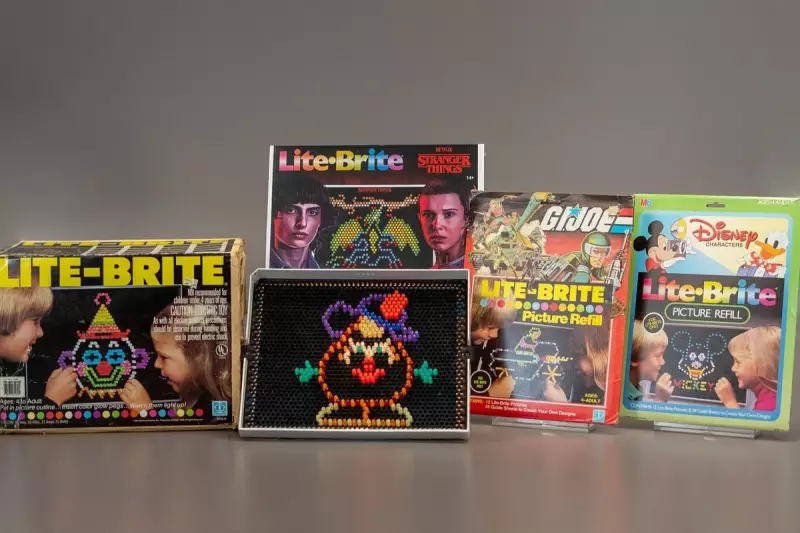
The Man Who Shaped Childhood: Remembering Burt Meyer
Burt Meyer, the creative genius behind some of the most beloved toys of the 20th century, has died at the age of 99. Meyer passed away on October 30, as confirmed by Rebecca Mathis, executive director of the King-Bruwaert House retirement community in Burr Ridge, Illinois, where he lived.
From Light Bulbs to Lite-Brite: The Birth of an Icon
The spark for one of his most famous creations, Lite-Brite, ignited in 1966 during a walk through Manhattan with Marvin Glass, owner of one of the era's premier toy design firms. As they passed a window display ablaze with hundreds of coloured lights, Meyer saw potential where others saw peril. Engineers at Marvin Glass & Associates, where Meyer was an employee, doubted electric lights could be made safe for children. Meyer, however, insisted it was possible.
His persistence led to the invention of a small, backlit box with black paper sheets, allowing children to punch holes and create their own illuminated patterns. This simple yet brilliant concept became a phenomenal success. Lite-Brite earned a place on Time Magazine's list of the 100 greatest toys and was inducted into the Strong National Museum of Play's hall of fame, with new versions still sold today.
Rock 'Em Sock 'Em: A Knockout Idea
Meyer's ingenuity also transformed a troubled concept into another timeless classic. A design team was struggling with a bulky boxing arcade game for home use. The project had stalled after a featherweight boxer died from a brain injury, making any toy associated with boxing seem unmarketable.
Meyer revisited the idea with a crucial creative shift. "This is too good to pass up," he recalled saying in a 2010 interview. "Let's take it away from humanity, let's make it robots. And we won't have them fall over, we'll have something funny happen."
The result was Rock 'Em Sock 'Em Robots, a game where players control boxing robots' fists with joysticks, winning by popping the opponent's spring-loaded head. The toy's legacy endured for decades, featuring in the film Toy Story 2 and inspiring a planned live-action movie adaptation announced by Mattel in 2021.
Born Burton Carpenter Meyer in 1926, he served for two years as a Navy aircraft mechanic. This hands-on experience with machines profoundly influenced his approach to toy design. After his service, he helped lead a postwar toy revolution, where plastic moulding and mass production created opportunities for more dynamic playthings.
In the mid-1980s, Meyer launched his own firm, Meyer/Glass Design, which developed numerous best-sellers including the comical game Gooey Louie and the Pretty Pretty Princess board game. His son, Steve Meyer, ran the business until 2006.
Even in retirement in Downers Grove, a Chicago suburb, Meyer's passion for mechanics and flight persisted. He built small planes and could be seen skilfully piloting them from a nearby private airfield well into his eighties. He often drew parallels between aerospace engineering and toy design, crediting his success to the highly collaborative environment at Marvin Glass & Associates.
With a vanity plate on his car that read TOYKING, Burt Meyer was, by most accounts, precisely that. He delighted in telling people his profession and hearing the joyful response: "Oh, I played with that!" His creations, born from a unique blend of childlike wonder and mechanical pragmatism, secured his legacy as a true titan of play.





